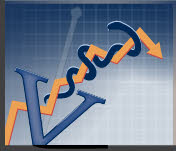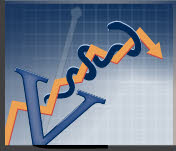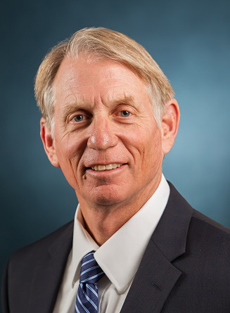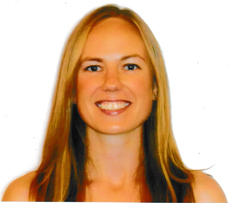
Dicks commentary bug

In the past three years, the veterinary profession has moved from the general idea that there are too many veterinarians to the idea that there is a shortage of veterinarians. Neither is true.
The situation is more nuanced than either statement suggests. Short-term changes in economic activity, prices, accessibility of veterinary services, and the common practice of hiring a full-time equivalent (FTE) veterinarian at 40 hours per week are factors that lead to cycles of labor shortages and surpluses.
Training future veterinarians in numbers that match the forecasted demand for services; being more flexible in defining the number of hours in an individual's workweek; and managing for changes in economic conditions can help minimize the variability in the supply of veterinary labor.
The veterinary labor market has been highly variable during the past decade. The ratio of job applicants to available jobs peaked in the spring of 2013 at nearly 3:1, according to information from the American Veterinary Medical Association's Veterinary Career Center. In some locations, particularly in suburbs, the number of veterinary applicants exceeded available jobs by more than 10:1. Today, the applicant-to-job ratio is 0.4:1. Put another way, for every applicant, there are 2.3 available jobs nationally.
Michael R. Dicks 288

Photo by Scott Nolan
Michael R. Dicks directed the American Veterinary Medical Association Veterinary Economics Division from 2013 to 2018.
Labor volatility is a problem for obvious reasons. When more people than jobs are available, wages can stagnate. When wages don't keep pace with the cost of education, student-debt-to-income ratios rise. New veterinarians faced with high debt-to-income ratios are under financial duress and likely experience higher levels of job dissatisfaction.
Conversely, when there aren't enough people to fill available jobs, the price of veterinary care may rise, ultimately dampening demand. This happened between 1998 and 2007: Veterinary prices rose rapidly and the number of animals not seen by a veterinarian more than doubled, even as the animal population grew, according to AVMA pet owner demographic survey results. That gap provided an opening for unlicensed providers of services that had been the purview of veterinary practices, such as dentistry, nutrition and large-animal reproductive services. Practitioners are struggling to regain these lost services to this day.
Sources of labor volatility
A 2013 veterinary workforce study conducted by IHS Global's Center for Health Workforce Studies and funded by the AVMA noted that the profession's capacity for providing veterinary services exceeded demand for those services by 12.5%. Many veterinarians interpreted the problem as an oversupply of veterinary labor but in fact, the gap revealed excess capacity. While this may sound like a semantical difference, it is not. Let us explain.
Excess capacity is the ability to provide more services than are demanded at a specific price. In a situation of excess capacity, demand for veterinary services could be heightened by lowering prices, adding locations and/or offering an expanded range of services. Oversupply, by contrast, suggests that even if services were free, their availability would exceed the need.
Dr. Melissa Maddux

Dr. Melissa Maddux was an AVMA economics fellow in 2016-2017, contributing to research and helping to communicate economics concepts to a veterinary audience.
This distinction is important because it frames the sources of labor volatility — supply of and demand for services, and the relative prices for services.
Sources of labor volatility in the veterinary sector include:
- General state of the economy
- Prices (relative to inflation) of goods and services
- Generational changes
- Supply of veterinarians in the pipeline (number of college seats filled)
- Demand for services (number of animals and strength of the human-animal bond)
- Indivisibility of labor (i.e., allocating labor in 40-hour blocks)
The effect of economic cycles and pricing
Just as economic recessions and expansions will continue to cycle, so will household incomes. Every household has a "market basket" of goods and services that it purchases. If a household's income can't keep pace with increased prices for market-basket items, discretionary items must go. Veterinary care is one such discretionary item.
Median household income dropped nearly 10% during the U.S. recession of 2007-09. The economic downturn saw diminished demand for veterinary services priced at pre-recession levels. At the same time, the need for those services continued to expand for most fields of veterinary medicine, as people increasingly included companion animals in their lives. (Horses are a different story. Their numbers declined sharply during the Great Recession.)
By our calculations, the decline in income accounted for nearly all the excess capacity of veterinary labor in 2012-13. A decline of nearly $7,000 in real median household income likely reduced household expenditures on pets by a $4.5 billion. That translates into $214,286 per year for the average practice, roughly equivalent to the production of one half-time veterinarian.
(An average veterinarian generates $440,255 a year and is paid about 20% of that production, according to calculations we made using information from the U.S. Bureau of Labor Statistics, U.S. Census Bureau and the North American Industrial Classification System. A similar production calculation by the American Animal Hospital Association for its member hospitals is slightly higher: between $531,000 and $575,000 per average veterinarian.)
During the recession, practices did not respond by lowering prices for products and services but continued to raise them. This caused demand to decline further and exacerbated the problem of excess capacity. The lesson: Veterinarians can't control economic fluctuations, but they can blunt their impact by tying prices to median household incomes (or some other economic indicator) in their respective communities.
Generational changes
The largest group of veterinarians today is between 55 and 75 years old, baby boomers. This group soon will be eclipsed by the group under 37 years of age, millennials. Demand for veterinary care is growing, largely due to a rising number of households, rising incomes and rising regard for companion animals. To meet the demand, the number of people entering the profession must outpace the number leaving.
Currently, approximately two veterinarians enter the profession for every one who departs. But it often is not a one-to-one swap in terms of work hours. There are indications that new graduates are less willing to work as many hours as veterinarians from older generations. They also have more options post-graduation. Demographic trends point to a shrinking proportion of veterinarians entering private practice: In 2018, 87% of veterinarians at retirement age were in private practice, while across the profession as a whole, 70% were in private practice. Among just-graduated veterinarians, less than 64% entered private practice directly. The remainder went on to advanced education or took jobs in government or industry.
Supply of veterinary college seats
Rising costs in education and government contributions that don't keep pace have led veterinary colleges to raise tuition and/or increase the number of seats. Since 2006, the number of seats has grown on average more than 4% per year, while tuition has risen by an average 5.2% annually. But the number of veterinary graduates is only one part of the supply problem. To better buffer against ups and downs in the economy, schools need to be able to forecast the number of hours of service needed in the future for each type of practice and location, and track students so that they graduate with the skillsets necessary to meet that specific demand.
That isn't happening now. For example, for reasons that are unclear, only one in five veterinarians who enters equine practice remains there five years after graduation. Paradoxically, there is no shortage of food or mixed animal veterinarians, yet an ongoing shortage of food animal veterinary services exists in some locations. That's because those locations do not have enough overall demand to support a practitioner full time. The picture suggests a misallocation of veterinarians by practice type, such that some practice types have high applicant-to-available-job ratios and others have low ratios.
In working with forecasted need, the planned supply of new veterinarians should be somewhat greater than the anticipated demand to account for the temporary unemployment of veterinarians seeking to relocate, change career paths or attend to family matters. Having a small level of excess capacity is both necessary and positive because it guards against shortages. As we mentioned earlier, shortages of veterinary labor have long-term adverse consequences because they open the door to unlicensed providers.
Varied demand for veterinary services ahead
The U.S. population is growing at a rate of 1.7% annually. Median annual household income also is rising, even taking into account the Great Recession: Between 1984 and 2017, the average annual increase was 0.35%. And pet owners increasingly treat their animals like family members. Together, these factors should grow the demand for small animal practitioners fast enough to absorb the increase in the supply of new small animal veterinarians.
U.S. equine and livestock populations are declining, however, which will reduce demand for mixed animal, food animal and equine practitioners.
Across all fields, rising prices for veterinary services, especially at rates that continue to exceed the real growth in median household income, will reduce the demand for veterinary services. Thus, this bears repeating: Veterinarians have some measure of control over the growth in demand through price-setting.
Clutching to a 40-hour FTE
Indivisibility of labor refers to the allocation of labor in 40-hour blocks. Adherence to this concept is a major source of labor volatility in the veterinary profession and across all sectors of the U.S. economy. Rarely does a practice owner have a client demand for veterinary services that can be perfectly satisfied by the 40-hour full-time-equivalent block.
What happens when there's more work than one full-time employee can provide in her allotted hours, but not enough to justify two full-time employees? Businesses tend to operate with less than optimum labor until the excess demand for labor exceeds 20 hours. This forces the single full-timer to work more hours. Results of an AVMA survey on underemployment showed that in 2017, if every practitioner could work the exact number of hours they wanted to work, the profession would have a net need for 3,300 more FTE veterinarians.
Anticipating and responding to expansions and contractions of the economy can help smooth out workload variability.
In private practice, this can be accomplished by unleashing employees from the 40-hour FTE. One could, for example, employ multiple part-time veterinarians to cover the work that conventionally is performed by one full-timer. Adopting more flexible scheduling can make smaller practices more competitive with larger and consolidated practices, which have more FTE employees and are therefore better able to absorb variability in demand.
The solution is not inexpensive. Hiring more veterinarians in order to deploy more flexible labor blocks could drive up employee-benefit expenses. One potential solution is for small practices to collaborate in the labor market like they work together in purchasing groups or in employing relief veterinarians.
To recap, the sources of labor swings in the veterinary profession are the indivisibility of labor, the state of the overall economy, the price of veterinary goods and services relative to inflation, and changing demographics of veterinarians and animal owners. While eliminating variability completely is unlikely, individual employers and the profession as a whole can work to mitigate it.
Next: The need for profession-wide data analytics
About the authors:
Michael Dicks, PhD, established the veterinary economics division of the American Veterinary Medical Association in 2013 and was its director until 2018. Dicks earned a BS in biochemistry and animal science from California Polytechnic State University, taught chemistry as a Peace Corps volunteer in Kenya, then completed a master's and doctorate in agricultural economics at the University of Missouri.
He was employed by the U.S. Department of Agriculture Economic Research Service for five years before joining the faculty at Oklahoma State University, where he spent nearly 24 years prior to his stint at the AVMA. Dicks now works as a consultant in several capacities, including as data chief at Erupt LLC, which provides data analytics and educational outreach to clients in the veterinary realm.
Melissa Maddux, DVM, is a 2016 graduate of the University of Tennessee College of Veterinary Medicine, a former AVMA economics fellow and CEO of Erupt. She also practices equine and small animal medicine in Knoxville.